Stem Cell Hair Transplant: How It Works, Costs and Alternatives
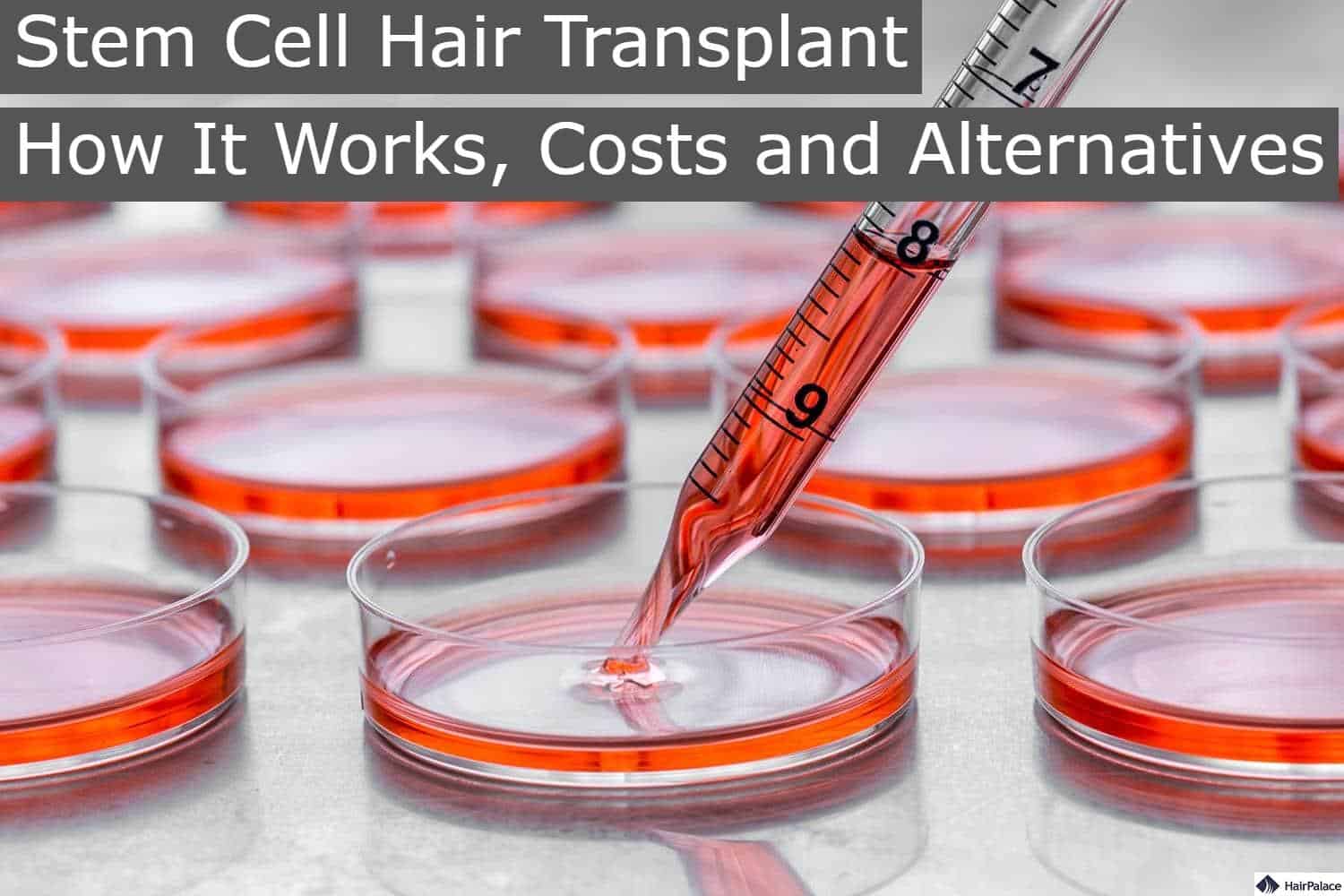
Stem cell hair transplant technique is one of the latest innovations in the field of hair restoration. In concept, it’s similar to traditional transplantation methods.
However, surgeons performing stem cell transplants extract a small tissue sample from donor areas instead of individual follicles.
Specialists then replicate the follicles from this sample in a laboratory, before the surgeon inserts it into the scalp’s balding areas.
An Italian research team completed a successful stem cell hair transplant in 2017, but the method is still undergoing extensive testing to ensure it’s safe and viable.
In this post, we’ll take a closer look at this procedure to help you determine if it’s the right solution for your thinning hair.
- What are stem cells?
- Stem cell treatments
- Side effects
- PRP vs Stem cell for hair
- Success rates
- Costs
- Stem cell hair transplant UK
- Alternatives
What are stem cells?
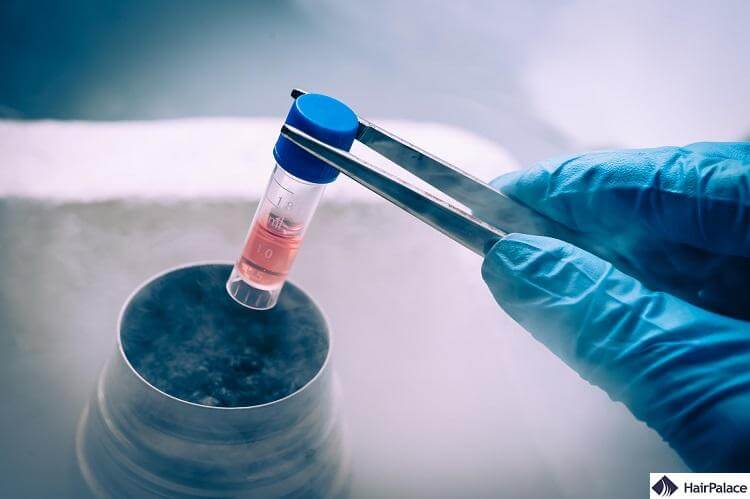
Stem cells are cells that have the ability to develop into many different types of cells in the body.
They are unique in their ability to self-renew, or create copies of themselves, and to differentiate, or develop into specialized cells with specific functions.
There are several different types of stem cells, including embryonic stem cells, mesenchymal stem cells, adult stem cells, and induced pluripotent stem cells.
Embryonic stem cells are derived from early embryos and have the potential to develop into any type of cell in the body.
Adult stem cells are found in various tissues throughout the body and are involved in tissue repair and regeneration.
Induced pluripotent stem cells are adult cells that have been reprogrammed to an embryonic-like state, allowing them to differentiate into different types of cells.
Stem cell injections have various applications in medical research and treatment. This is why stem cell-based therapies are growing in popularity.
They can be used to study the development and progression of diseases and to test new drugs and therapies.
Stem cell therapies are also being developed for a variety of conditions, including cancer, heart disease, and neurological disorders.
Stem cell hair transplant or stem cell therapy?
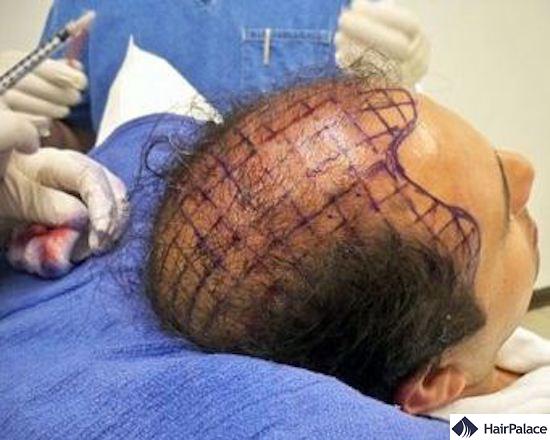
Stem cell hair therapies start with a punch biopsy. To extract stem cells the surgeon removes a small cylindrical tissue sample with a special instrument featuring a rotating blade.
The tissue is inserted into a centrifuge, which spins the sample at incredible speed to separate the stem cells from the skin.
This stage is followed by injecting stem cells into the areas affected by androgenetic alopecia.
If the treatment is successful, the implanted cells will create new hair growth that blends with existing hair to achieve a natural look.
Take a look at how the treatment is done when it’s carried out by a qualified professional.
What is the difference between these procedures?
Most clinics market stem cell therapies as hair stem cell transplantation. While they share some similarities they’re not exactly the same procedure.
Stem cell for hair loss therapy, as we described above is more like PRP than a hair transplant.
It doesn’t create or implant any new follicles, it simply injects stem cells in hopes of rejuvenating existing hair follicles and creating stronger hair overall.
Stem cell hair transplants on the other hand use the extracted stem cells to create new hair follicles under lab conditions which are then implanted into the thinning areas.
This procedure is truly exciting in theory, as it would allow even completely bald patients to undergo surgery, provided they have enough stem cells to create new follicles from.
While the treatment is revolutionary, it is still very much in its infancy compared to stem cell hair therapies.
What the research says
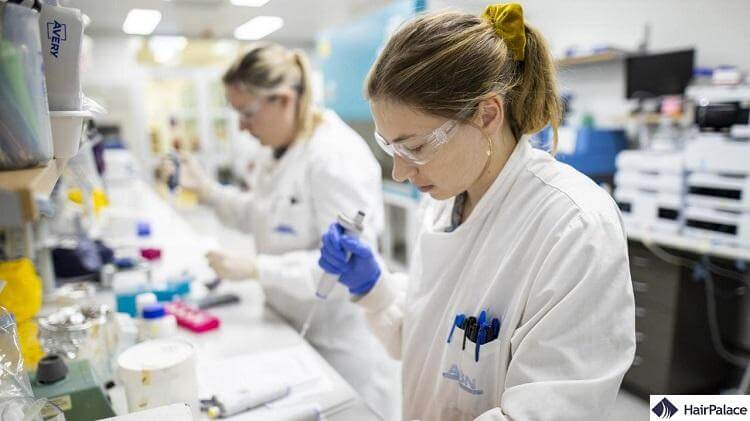
Research into stem cell therapy is ongoing. There are subtle variations between different procedures being investigated, but they all revolve around the same premise.
A number of clinics in the UK and other countries offer stem cell transplantation and stem cell therapy.
These in-office treatments are performed on an outpatient basis and involve taking fat cells from the hip or abdomen via liposuction. Local anaesthetic is administered to help the patient stay comfortable.
Adipose-derived stem cells are then removed from these fat cells and injected into the scalp. This type of stem cell treatment lasts around three hours, although this can vary from patient to patient.
However, anyone considering this treatment may prefer to wait until researchers have gathered more conclusive information on its safety.
Any clinics offering this stem cell hair transplant treatment are unable to guarantee a successful outcome.
Results may differ from patient to patient, and might only begin to show after multiple treatments across a long period.
In the future, stem cell therapies could be an effective option for some of the most common types of hair loss, including male and female pattern baldness.
How long does it take to recover from a stem cell hair transplant?
Patients may experience moderate discomfort after their hair transplant surgery, though this should last no longer than one week.
Patients are advised to avoid intense exercise during this period. A friend or family member should drive patients home after the procedure, due to the anaesthetic. Scarring will occur at the fat-removal sites.
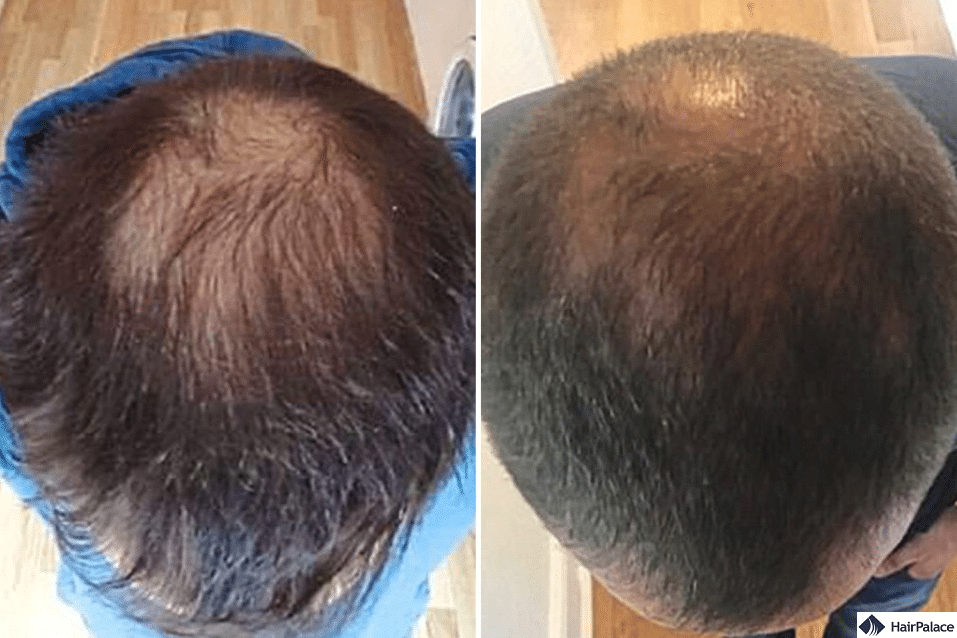
What are the side effects of a stem cell transplant?
Further research into stem cell treatments for hair loss is required before we can fully understand potential side effects.
Bleeding, infected hair transplant, and scarring are possible as with any treatment that involves cutting the skin.
Punch biopsies rarely cause complications, though they could damage arteries or nerves under the biopsy site. Liposuction may also lead to these side effects and difficulties.
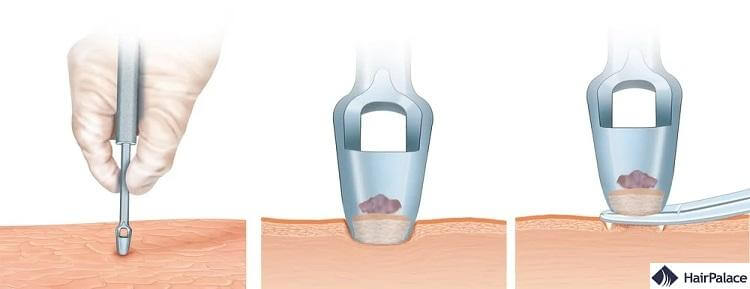
PRP vs Stem cell for hair
PRP is derived from the patient’s own blood just like stem cells are derived from the patient’s own fat tissue.
In PRP the blood is also processed so only the enriched platelet-rich plasma remains, which contains a large concentration of growth factors.
PRP works by stimulating hair follicles resulting in more hair growth, while hair stem cell treatment is believed to rejuvenate dormant follicles possibly causing them to start producing hairs again.
These treatments carry a minimal risk of allergic reactions, the only main risk associated with each procedure is infection.
Both PRP and stem cell therapies offer innovative approaches to hair regrowth, moving beyond traditional treatments like minoxidil and finasteride.
However, neither method guarantees results, and the long-term efficacy and safety profiles are still being explored.
What is the success rate of a stem cell hair transplant?
Studies conducted so far have achieved encouraging results.
According to Italian researchers, hair density increased by 29% within six months of the final stem cells for hair loss session.
However, take care when researching your options.
Clinics shouldn’t guarantee successful growth from stem cell hair restoration until more conclusive evidence is available.
Stem cell hair transplant cost
Pricing on stem cell hair treatments is still undetermined as this method is in its infancy.
Hair clinics and specialists offering their own stem cell procedures tend to avoid listing hair transplant prices on their websites.
Instead, many invite prospective patients to contact them to find out how much they’ll pay.
Some of the earliest forms of stem cell hair transplants are being offered for approximately £ 2500 to £ 9000.
However, the final price will always depend on your individual case and the extent of your hair loss.

Stem cell hair transplant UK
Despite what some clinics claim, this treatment is not available in the UK yet. Instead, you can opt for a stem cell treatment.
While there are some similarities between the two, they’re not quite the same as we explained above.
Stem cell hair transplant UK price can be as much as £250, and with an average of 10 sessions required the total cost may end up at £2500.
This adds up to the cost of a normal FUE hair transplant, which often leads to better and more long-lasting results.
Stem cell hair transplant London
Unsurprisingly you will have the most success finding a provider in the capital. Multiple clinics offer various types of stem cell hair treatments.
While you have many clinics to choose from you should be aware that stem cell hair treatment cost is usually higher in London than it is in smaller cities across the UK.
Additionally, prices can vary greatly so we advise all patients to do thorough research before choosing a clinic to get the best treatment at the lowest possible price.
However, you should remember that everyone reacts differently to the treatment and stem cell hair regrowth results may vary from patient to patient.
Should you consider other hair transplant options?
Besides direct hair implantation (DHI), robotic hair transplants, and hair plugs, two of the most common alternatives to stem cell hair transplants are FUT hair transplant and FUE hair transplant.
FUE is the most popular of the two. It involves removing healthy follicles from donor areas on the back and sides of the scalp.
These are implanted into the scalp to stimulate growth in balding areas.
This technique causes no visible scarring (unlike FUT) and has an 80% success rate. But a more advanced version — FUE2 — has a 90% success rate.
HairPalace guarantees that 80% of implanted hairs will start growing within one year of treatment without shedding again. We’ll re-implant any hairs that fail to meet these criteria free of charge.
Unlike stem cell hair treatments, the best hair implantation technique comes with a written guarantee and has a high success rate.
Stem Cell Hair Transplant FAQ
The Journal of Stem Cells & Cloning published the results of a study into these procedures. On average, participants grew 31 hairs per square centimetre within 24 weeks of treatment. All participants, though, achieved 23% extra hair growth in a six-month period, with the number of hairs increasing by up to 53%.
No, the goal is to create new hair follicles using cells from the patient’s body without extracting any existing hair.
This is an experimental hair restoration procedure that uses stem cells to stimulate hair follicles for growth, aiming to increase hair density and treat baldness.
Stem cells have shown promise in treating hair loss, and preliminary research suggests they can stimulate hair follicles to grow. While some results are promising, the technique is not yet widely accepted as a definitive treatment for hair loss.
To activate hair stem cells naturally you should try stress reduction techniques such as medication, essential oils and regular scalp massages to increase blood flow in the scalp. However, these methods are not guaranteed to work the same for everyone.
It is still experimental, and long-term results are being studied. The permanence of the results will vary based on individual factors and the success of the treatment.
Hair stem cells are located in the hair follicle, specifically in a region called the “bulge,” which is situated in the outer root sheath at the attachment point of the arrector pili muscle. These stem cells play a crucial role in hair regeneration and the hair growth cycle.
Last medically reviewed on July 24th, 2024
- Balañá ME, Charreau HE, Leirós GJ. Epidermal stem cells and skin tissue engineering in hair follicle regeneration. World J Stem Cells 2015;7:711-27.https://doi.org/10.4252/wjsc.v7.i4.711
- Gentile P, Scioli MG, Bielli A, Orlandi A, Cervelli V. Stem cells from human hair follicles: first mechanical isolation for immediate autologous clinical use in androgenetic alopecia and hair loss. Stem Cell Investig. 2017;4:58.https://doi.org/10.21037/sci.2017.06.04
- Talavera-Adame D, Newman D, Newman N. Conventional and novel stem cell based therapies for androgenic alopecia. Stem Cells Cloning. 2017;10:11-19https://doi.org/10.2147/SCCAA.S138150
- Zito PM, Raggio BS. Hair Transplantation. Updated 2021https://www.ncbi.nlm.nih.gov/books/NBK547740/
- Zuber TJ. Punch biopsy of the skin. Am Fam Physician. 2002;65(6):1155-1158.https://www.aafp.org/afp/2002/0315/p1167.html


